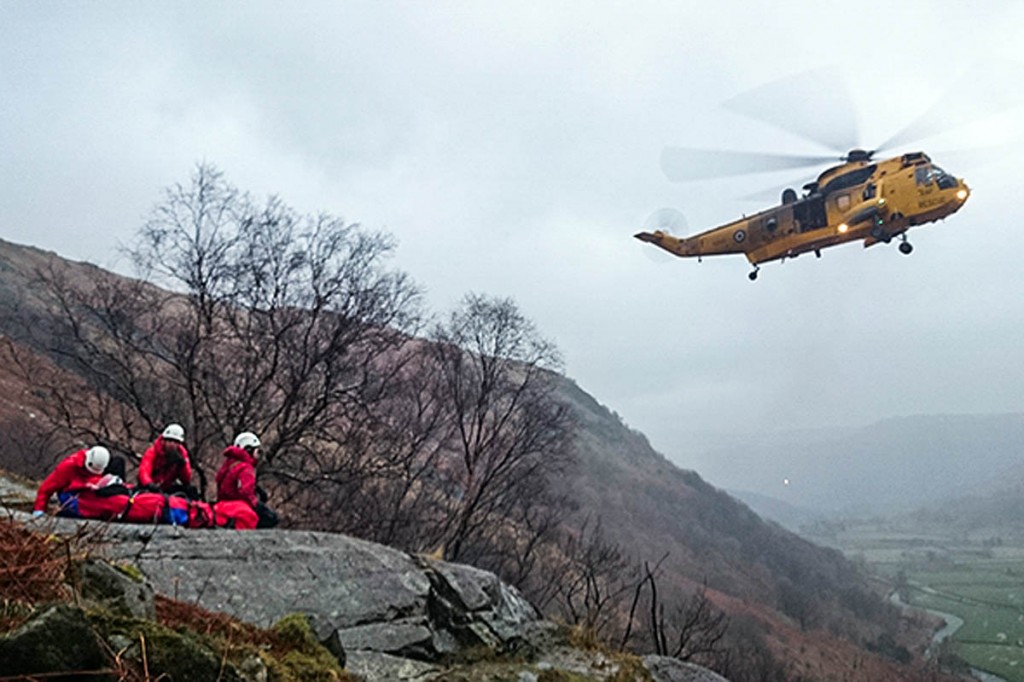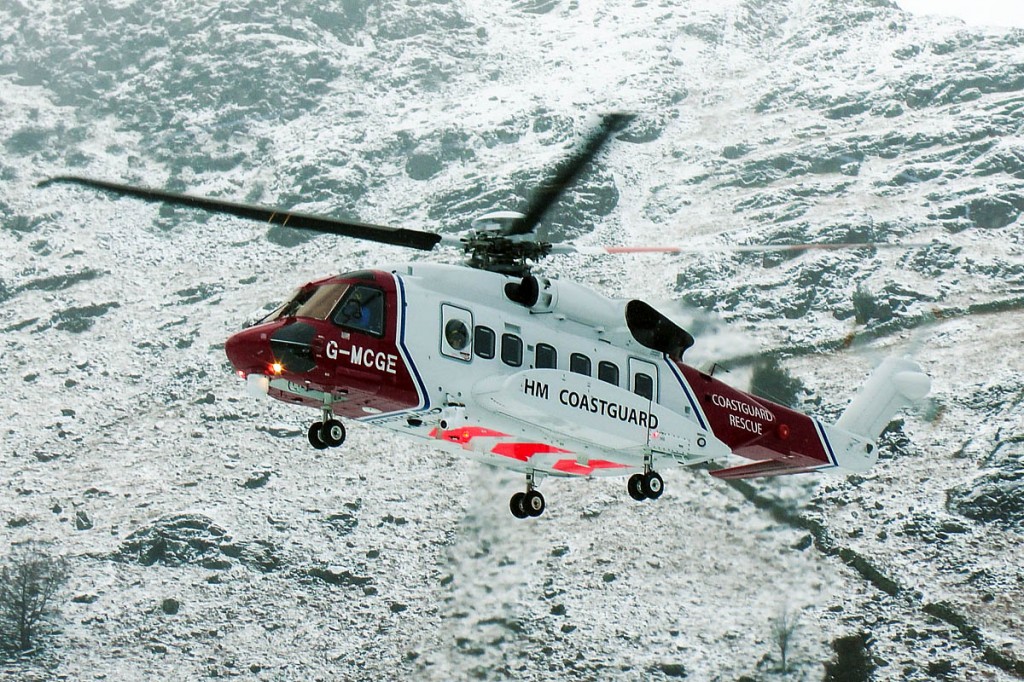Mountain rescuers in the Lake District are staging their final training day with the military Sea King search and rescue helicopters of the RAF.
The crews of the ageing yellow helicopters from Boulmer on the Northumberland coast will be stood down at the end of September.
Their roles will be taken over by civilian aircraft operated by American-owned Bristow, under the control and livery of the Coastguard.
Richard Warren of the Lake District Search and Mountain Rescue Association, the umbrella body for Cumbria’s 12 teams, said: “For the past six months the Lake District’s 350 volunteer team members have been undertaking transition training, working with the new Sikorsky S-92 Coastguard helicopters.
“While this has been ongoing, teams have also needed to keep their training up to date with the Sea King. RAF Boulmer, based in the North-East, is the flight that most frequently responds to mountain rescue requests from our volunteer teams in the Lake District, closely followed by RN Gannet at Prestwick.
“RAF Boulmer will be closing down its operations at the end of September and from then the teams will be supported by Bristow’s Humberside base in the South, RN Gannet at Prestwick followed by Bristow’s bases at Prestwick in the North and Caernarfon in north Wales to the west.
“Walkers visiting Loweswater on the August bank holiday Saturday will be seeing the very last training day for our mountain rescue teams in the Lake District. This will also be a final opportunity for teams to bid farewell to the Sea King and its crews of four.”
Mr Warren said Wasdale MRT was supported for the first time by a Coastguard Sikorsky earlier this month when a woman broke her ankle while walking on Scafell Pike.
“Due to a hazardous stretcher-carry back down the mountain, the team leader called in helicopter support and was extremely surprised and pleased when he was advised that a Sikorsky S-92 from Humberside was being scrambled to their location.
“This much larger and heavier, more powerful and greater capacity helicopter has a very distinctive engine sound that Cumbrians will soon become used to and teams will become experienced in the fierce downwash which blows you off your feet if you are not secure.
“This rescue was the very first occasion where the new Bristow helicopter had flown into Cumbria on an operational mission, a truly historic event for the teams.
“As if this was not enough for the Wasdale team, they carried out another rescue on 23 August where a male walker had fallen 20m from the Corridor Route on Scafell Pike. Another serious injury with a very difficult stretcher evacuation necessitated a helicopter with a stretcher winching capability.
“The sight of the bright yellow RAF Sea King from RAF Boulmer was a fabulous sight especially as the bad weather was just about to hit.
“A great bit of flying to get the casualty out quickly before the cloud swept in meant a quick flight for the injured man to West Cumberland Hospital and possibly the last time Wasdale would work operationally with the RAF Boulmer Sea King before its retirement.”
The first search and rescue helicopters, Dragonfly and Whirlwind aircraft, were introduced in 1953. Sycamores replaced the Dragonfly and the Sea King was first used in 1978 to replace the Whirlwind, which operated alongside Wessex helicopters.
The Wessex continued in SAR service until 1997 at the Search and Rescue Training Unit at RAF Valley on Anglesey.
The Sea King was introduced at RAF Boulmer in 1979 and 5,061 operations have been completed to date. During 2014 there were 152 callouts for the RAF Boulmer Sea King, with 126 persons helped.
Over the past five years the average number of callouts was 160, 25 per cent of which involved mountain rescue teams. A Flight 202 Squadron will cease operations on 1 October 2015, with crews moving to various other jobs in the RAF, being redeployed with Bristow and other aviation jobs and some will retire.
There are more than 1,200 mountain rescues carried out by volunteers each year in England and Wales with about half in the Lake District. A typical rescue may involve up to 20 team members for five to six hours on average. Three-quarters are for trauma and medical cases, and the rest are searches.
Mr Warren said helicopters do assist, but are only called for a relatively small percentage of rescues where urgent air support is required and weather conditions allow.

